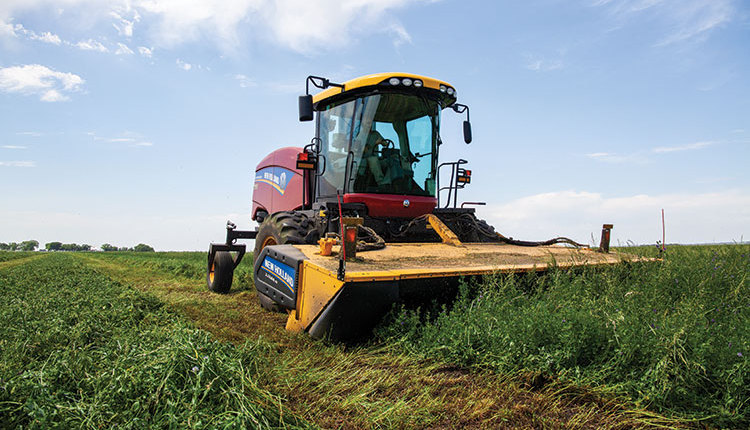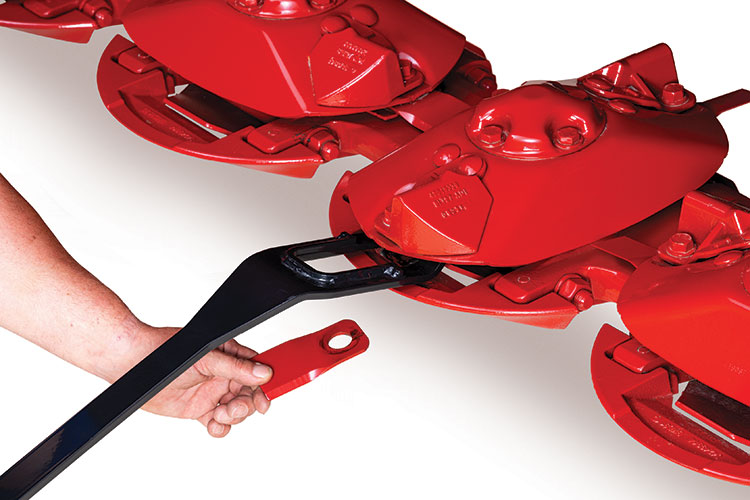
Every year, there is a lot of lodged forage due to delayed harvests caused by heavy winds and rain associated with severe storms. Lodging clearly represents a loss; however, the loss can be minimized with appropriate mowing methodology.
First, it is important to consider the types of lodging that may have occurred as the degree of loss and mowing recommendations will vary slightly:
1. Field with stems at 45-degree angle (plus or minus)
2. Field with stems at less than 10- or 15-degree angle from ground
3. Field lodged with lower stems flat to ground and regrowth vertical
Most of these recommendations add to the expense and labor of harvesting lodged forage. Some may be more feasible in certain situations than others. Methods of enhancing harvesting lodged forage include:
Ensure that knives are sharp. This is especially true for disc mowers.
Use knives with a greater angle on the disc mower (for example, going from 7- to 14-degree angled knives). Changing knives on a disc mower used to take several hours. Now, many disc mower manufacturers have quick-change blades that minimize blade change time to a few seconds per blade (see photo).
Use crop lifters on discs (see photo).

Mow against the direction of lodging. This will clearly result in the greatest pickup of lodged forage by the mower-conditioner but will add significantly to the time to harvest a field. Also, some fields don’t lend themselves to harvesting in one direction due to shape, size, or topography.
Lower the cutter height. The general recommendation is to harvest alfalfa at a 3-inch cutting height and most cool-season grasses (except ryegrass) at 4 inches. Cutting lower may be an option for lodged forage to improve the pickup efficiency, but it will also result in more ash in the harvested forage. The lower cutting height will also reduce the regrowth rate of cool-season grasses since carbohydrates for regrowth are stored in aboveground growth. Cutting lower with a disc mower may also result in alfalfa crown damage if cut too close to the ground. Check for proper flotation pressure after adjusting cut height so knives are not lower than intended. Lowering cutting height is most effective for Lodging Conditions 1 and 3 described above.
Reduce the ground speed to allow for the pickup of lodged forage. This is especially true for Lodging Conditions 2 and 3. Additionally, keep disc speed high to enhance forage pickup by mower.
A mower with a reel will pick up additional lodged forage for Lodging Conditions 1 and 3 described above.
Using one or more of the above recommendations will enhance the harvested yield from lodged fields. The methods will also leave less residue in the field. This residue reduces the quality of the next harvest; it can also serve as a source of inoculum for diseases causing leaf drop and yield loss in the next harvest.
This article appeared in the March 2021 issue of Hay & Forage Grower on page 27.
Not a subscriber? Click to get the print magazine.

